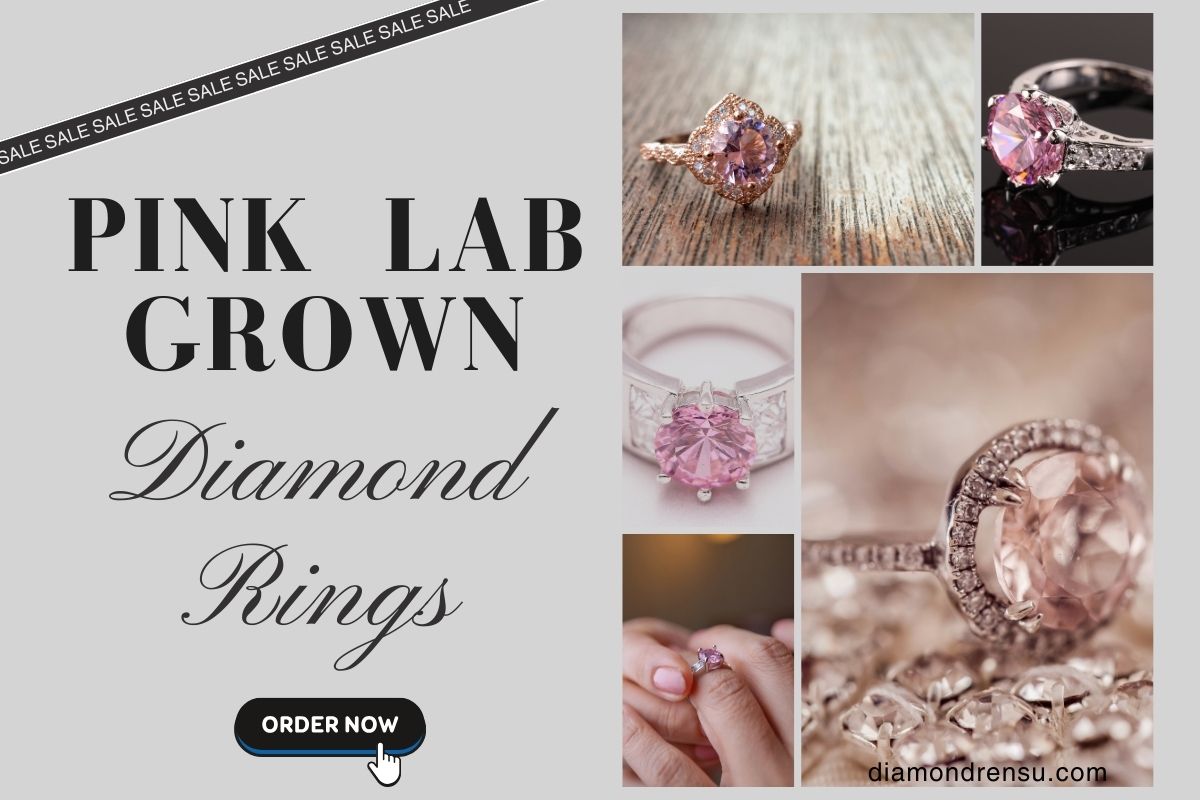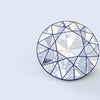
Lab Grown Pink Diamonds: Unveiling the Future of Sustainable Luxury Gemstones
Lab-grown pink diamonds are an innovative and sustainable alternative to their mined counterparts, offering you a choice that balances luxury with environmental and ethical considerations. Created in controlled laboratory environments, these diamonds replicate the natural conditions under which pink diamonds form, producing stones with comparable physical, chemical, and optical characteristics. Pink diamonds, with their alluring hue, have long been a coveted choice for jewelry, symbolizing love and rarity. By choosing lab-grown pink diamonds, you're not only embracing their beauty but also supporting a technology that reduces the need for invasive mining processes.
The process of creating lab-grown pink diamonds involves simulating the high pressure and temperatures that naturally occur over millions of years beneath the Earth's surface. This process, called chemical vapor deposition (CVD) or high-pressure high-temperature (HPHT) synthesis, enables the precise control over the diamond's properties, including the coveted pink coloration that is much harder to find in nature. With advancements in technology, the creation of lab-grown pink diamonds has become more accessible, providing you with a gemstone that is almost indistinguishable from a mined diamond in appearance and quality, but often at a more affordable price point.
Table Of Contents
- What Are Lab Grown Pink Diamonds?
- Differentiating Lab Grown and Mined Diamonds
- Grading and Quality of Lab Grown Pink Diamonds
- The Market for Lab Grown Pink Diamonds
- Production Processes of Lab Grown Pink Diamonds
- Selection Guide for Buyers
- Styling and Usage
- Advancements and Innovations
- Frequently Asked Questions
Understanding the distinction between lab-grown and mined pink diamonds is important, particularly when making an informed decision about your jewelry. Observations reveal that lab-grown pink diamonds show distinct characteristics, such as the absence of green fluorescence which is sometimes seen in color-enhanced natural pink diamonds. Yet, both types continue to hold exceptional allure and significance in the world of fine jewelry.
What Are Lab Grown Pink Diamonds?
Before delving into lab grown pink diamonds, understand that they share the same beauty and physical properties as mined gems but originate from a controlled laboratory environment.
Definition and Basic Characteristics
Lab grown pink diamonds are real diamonds created in a laboratory setting, possessing a similar chemical composition and crystal structure as natural pink diamonds. Color: Their distinct pink hue differentiates them from other diamonds, which is not merely a surface characteristic but a part of their very essence. Clarity and quality vary across stones, but they typically match those found in nature. Physical properties: Like all diamonds, lab grown pink diamonds are highly durable, measuring a 10 on the Mohs scale of hardness.
The Science Behind the Color
The color of lab grown pink diamonds results from specific conditions during the creation process that mimic the earth's natural diamond-forming environment. Through advanced technological methods, experts manipulate factors like pressure and temperature and introduce elements like nitrogen or boron to induce the pink coloration. (Lab - grown colored diamonds from Chatham Created Gems) The exact hue, ranging from soft pastel to deep vivid tones, depends on the introduced impurities and the formation process, both affecting the diamond's hue and tone.
Differentiating Lab Grown and Mined Diamonds

| Aspect | Lab-Grown Diamonds | Mined Diamonds |
|---|---|---|
| Formation | Created in a controlled environment using advanced technological processes that replicate natural diamond-growing conditions. | Naturally formed deep within the Earth's mantle over millions of years under intense pressure and heat. |
| Origin | Produced in laboratories using high-pressure, high-temperature (HPHT) or chemical vapor deposition (CVD) methods. | Extracted from diamond mines around the world, often in kimberlite pipes or alluvial deposits. |
| Cost | Generally more affordable than mined diamonds due to lower production costs. | Can be more expensive, with prices influenced by factors like carat weight, cut, color, and clarity. |
| Appearance | Can exhibit different growth patterns and features, and may have fewer inclusions or different types of inclusions. | Show a wide range of characteristics influenced by natural conditions, including inclusions, color variations, and growth patterns. |
| Certification | Lab-grown diamonds are certified by gemological laboratories, and some may have specific identifiers indicating their origin. | Mined diamonds are also certified by reputable gemological laboratories, providing details on the 4Cs (cut, color, clarity, and carat weight). |
| Ethical Considerations | Considered a more environmentally friendly and ethically sourced option, as they do not involve environmentally impactful mining practices. | Mined diamonds may be associated with ethical concerns related to mining practices, although efforts are made to ensure responsible sourcing. |
| Market Presence | Gaining popularity and acceptance in the market, especially among eco-conscious consumers. | Traditional and well-established in the market, with a long history of being used in jewelry. |
| Availability | Increasingly available as technology advances, providing consumers with more options. | Limited by the natural occurrence of diamonds, making larger or high-quality diamonds more rare and valuable. |
When you're considering a pink diamond purchase, understanding the differences between lab grown and mined diamonds is crucial. These distinctions affect much more than just the origins—they also encompass unique properties and various ethical considerations.
Comparison of Properties
Lab Grown Pink Diamonds:
- Crystal Lattice: Structurally identical to mined diamonds, with a carbon atom crystal lattice that defines its strength and sparkle.
- Appearance: Nearly indistinguishable from natural diamonds to the naked eye; specialized equipment is often necessary to tell them apart.
- Color Consistency: Offer more uniform coloration, which can be an advantage over the natural variety that may exhibit a wider range of hues and intensities.
Natural Mined Diamonds:
- Crystal Lattice: Possess a crystal lattice formed over millions of years under high pressure and temperature.
- Unique Qualities: Each natural diamond, including pink variants sourced from places like the Argyle mine, has a unique set of inclusions and color nuances.
- Value: Often regarded higher in terms of value due to their rarity, especially for certain colors and clarities.
Environmental and Ethical Considerations
Lab-Created Diamonds:
- Sustainability: Generally have a lower environmental impact; production requires less land and water use, and results in fewer carbon emissions.
- Ethical Production: Associated with fewer human rights issues, making them an attractive choice for consumers concerned about the ethical implications of their purchases.
Natural Mined Diamonds:
- Environmental Cost: Extracting diamonds from the earth can lead to significant ecological damage, including habitat destruction and soil erosion.
- Ethical Issues: Mining practices may contribute to conflict, pose human right risks, and lead to the exploitation of workers; however, some natural diamonds are recovered using more responsible methods with a focus on protecting local communities.
By understanding the distinctions in terms of properties, sustainability, and ethical implications, you can make a more informed decision between lab grown and natural mined pink diamonds.
Grading and Quality of Lab Grown Pink Diamonds

When considering lab grown pink diamonds, you should be acutely aware of their grading and quality which are assessed similarly to natural diamonds. These aspects are crucial for determining the value and authenticity of your gemstone.
Certification by Gemological Institutes
Your lab grown pink diamond's certification is a testament to its quality. Renowned organizations such as the Gemological Institute of America (GIA) have begun to apply similar grading standards to lab-created stones as they do to natural ones. For instance, Chatham Created Gems, a known producer, receives no grading reports for synthetic diamonds from the GIA. However, certificates from the International Gemological Institute (IGI) often accompany lab grown diamonds, providing a detailed analysis of their quality, clarity, color, and cut.
Grading Scales Explained
The scale used to grade your lab grown pink diamonds is analogous to that of natural diamonds, focusing on the four Cs: Color, Clarity, Cut, and Carat weight. Color grading of lab grown pink diamonds is paramount since it defines their hue and vibrancy; the grading ranges from D (colorless) to Z (light yellow or brown), though these benchmarks are less applicable to pink diamonds. Clarity grades determine the presence of internal characteristics called inclusions, and range from Flawless (FL) to Included (I3). The cut of your diamond impacts its symmetry, proportion, and polish, which in turn affect its brilliance and fire. Finally, carat weight is the measure of a diamond's apparent size. It's important to understand that two diamonds of equal carat weight can have vastly different values depending on their color, clarity, and cut grades.
The Market for Lab Grown Pink Diamonds
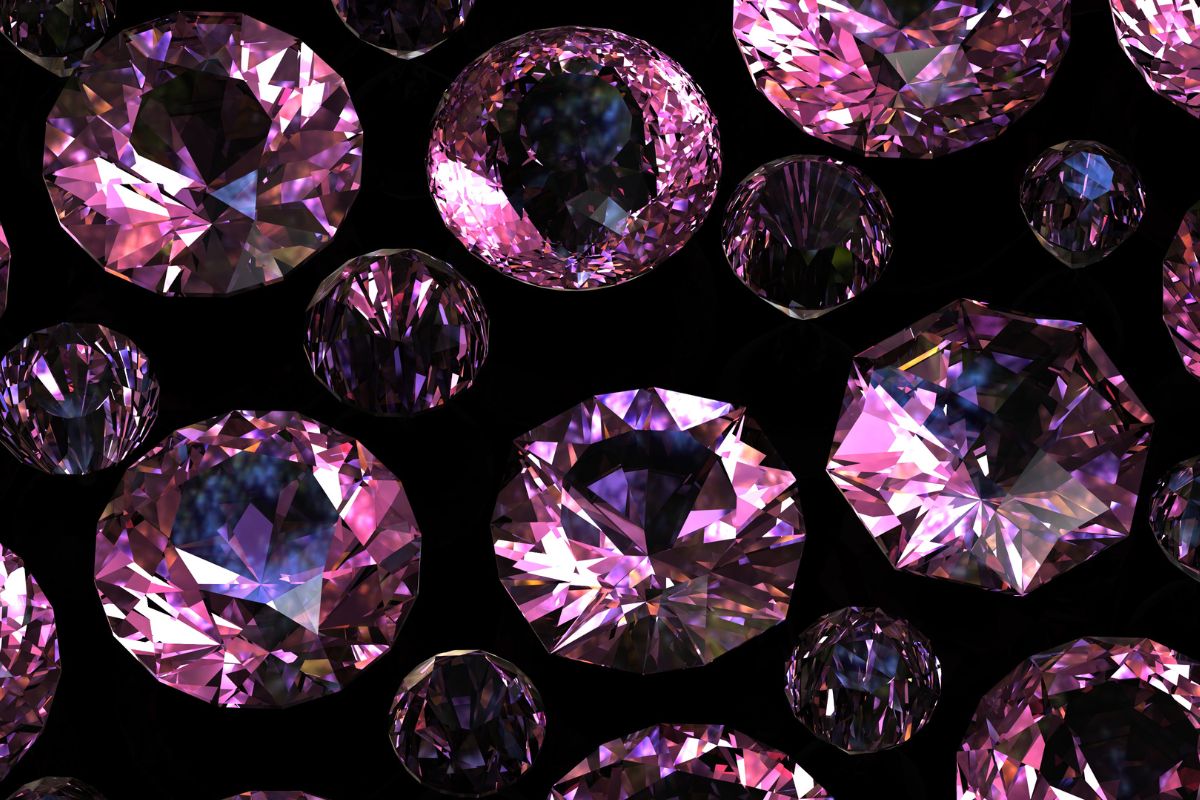
The marketplace for lab grown pink diamonds is both vibrant and dynamic, reflecting your growing interest in sustainable and affordable options. Fancy colored diamonds, particularly pink, are sought after for their beauty and uniqueness.
Current Trends in Demand
You are now witnessing a surge in demand for lab grown pink diamonds, primarily due to their affordability compared to their natural counterparts. The emergence of these diamonds within the jewelry industry, especially in articles like pink diamond engagement rings, has been significantly influenced by your increasing preference for ethically sourced and environmentally conscious options. With advances in technology, the quality and size of synthetic pink diamonds have improved, making them more desirable.
Key Points:
- Increased Demand: Due in part to eco-friendly and ethical considerations.
- Quality Improvements: Advanced technology has led to better quality synthetic diamonds that challenge natural diamonds in aesthetics.
Investment Potential and Resale Value
When considering lab grown pink diamonds as an investment, it's important to note that while they share many physical and chemical properties with mined diamonds, the resale value is generally lower. The value of fancy colored diamonds stems from their rarity; however, lab grown options do not hold the same scarcity. Thus, their value as an investment may not appreciate like natural fancy colored diamonds. Nonetheless, your interest in lab grown pink diamonds as part of an engagement ring setting remains robust due to their beauty and more accessible price point.
Considerations:
- Resale Value: Typically lower for lab grown diamonds compared to natural ones.
- Market Perception: Increasing acceptance may influence future value positively.
Production Processes of Lab Grown Pink Diamonds
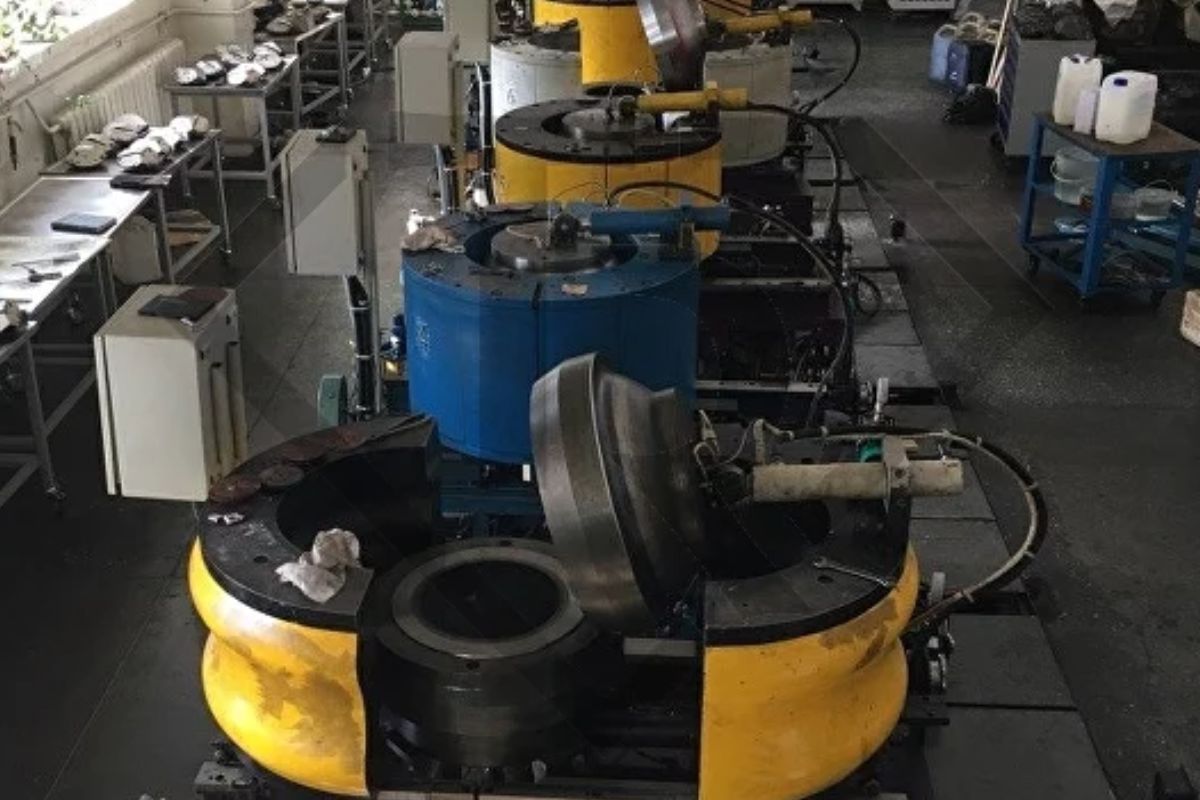
Lab grown pink diamonds are meticulously created through sophisticated technological methods, each ensuring that the final gem meets high standards of quality and color. These diamonds are crafted in controlled environments using predominantly two methods: Chemical Vapor Deposition (CVD) and High Pressure High Temperature (HPHT), both of which are designed to replicate the natural growing conditions of diamonds.
Chemical Vapor Deposition (CVD)
The CVD process begins by placing a thin slice of diamond, known as a seed, in a sealed chamber. The chamber is then filled with a carbon-rich gas mixture, typically methane and hydrogen. When the gases are heated to extremely high temperatures, they begin to break down, allowing carbon atoms to adhere to the diamond seed. Over time, these atoms build up in crystalline layers to form a diamond. Your lab grown pink diamond emerges from a highly controlled environment, where factors like temperature, pressure, and gas composition are carefully managed to ensure the desired pink hue.
High Pressure High Temperature (HPHT)
HPHT simulates the natural conditions under which diamonds are formed deep below the Earth's surface. In this method, a small diamond seed is placed within a piece of carbon, usually graphite. This assembly is then subjected to temperatures in excess of 1400°C and pressures above 5 GPa. Through this process, the carbon melts and starts to form a diamond around the seed crystal. The conditions to produce a pink diamond via HPHT are incredibly precise, necessitating exacting control over every aspect of temperature and pressure to achieve the signature color.
Selection Guide for Buyers
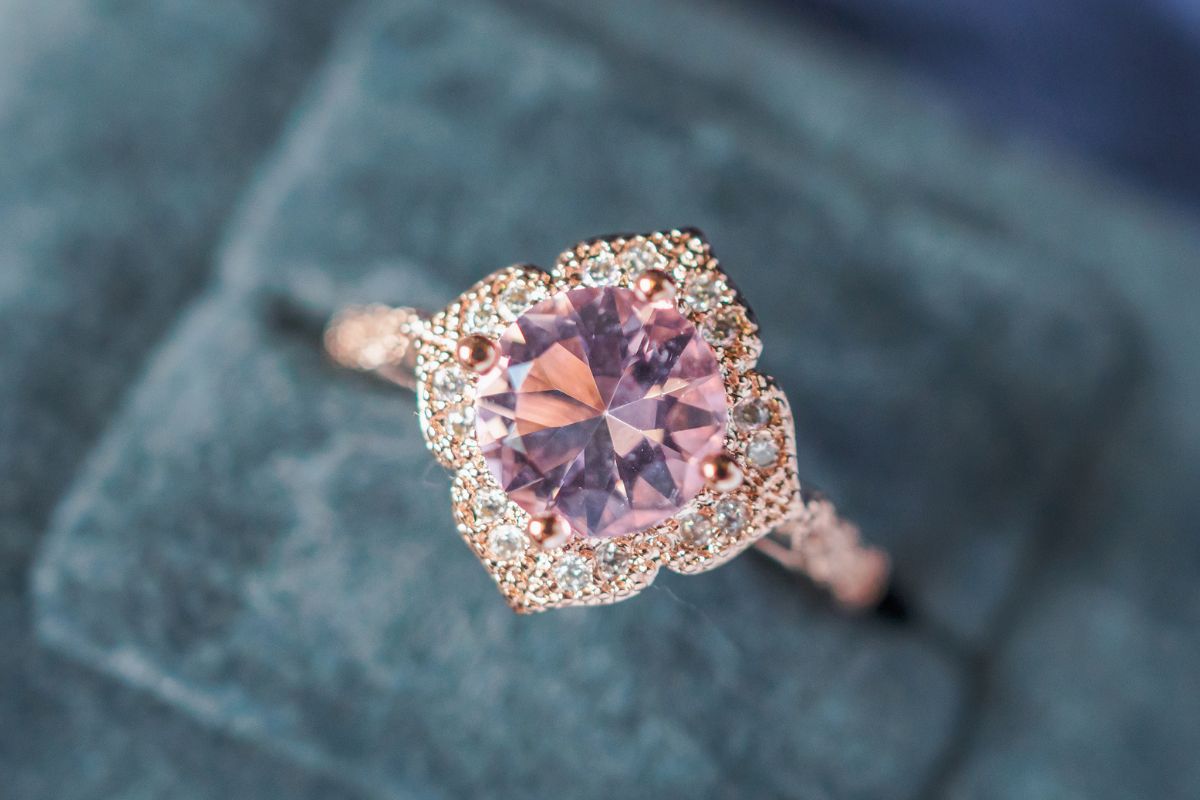
When investing in a lab grown pink diamonds, understanding their unique qualities and how they are set can profoundly impact their beauty and value.
Understanding the 4Cs of Pink Diamonds
- Carat: The weight of your diamond is measured in carats. Heavier diamonds are typically more valuable, but the carat is just one factor in evaluating a diamond's worth.
- Cut: The cut of a pink diamond is pivotal to its beauty. It's not just about the shape; it's how well the diamond has been cut to allow for maximum brilliance. Shapes such as round, oval, emerald, and cushion are popular for pink diamonds, with round cuts often being the brightest due to their symmetry.
- Clarity: This describes the absence of inclusions in your diamond. Lab grown pink diamonds often have fewer imperfections than natural stones, but you should still look for a diamond with clarity that ensures it sparkles.
- Color: Pink diamonds come in varying shades—from faint pink to richly saturated hues. Intensely colored diamonds are rare and valuable. Your choice should align with your personal preference and the piece's aesthetic.
Choosing the Right Setting and Shape
Setting: The setting you choose for your pink diamond is crucial. For engagement rings, the setting should not only be secure but also complement the stone's beauty. Consider classic and elegant options like a bezel setting for a modern look, or a prong setting that allows more light into the diamond to enhance its sparkle.
Shape: The shape of the diamond plays a significant role in the overall look of your pink diamond engagement ring. If you desire a traditional and timelessly elegant appearance, a round cut is a go-to. An oval shape can offer a more unique aspect and the impression of length, ideal for more slender fingers. The emerald cut showcases a different kind of elegance, with a focus on the diamond's clarity with its open step cuts, while the cushion cut offers a soft, romantic look with rounded edges.
When selecting a lab grown pink diamond, each choice you make from the cut to the setting should reflect personal style and the inherent qualities of the stone.
Styling and Usage
Lab-grown pink diamonds blend modern technology with classic elegance, offering you a sophisticated choice for jewelry. Their unique hue becomes a standout feature in any piece—offering versatility and a touch of glamour.
Jewelry Types and Design Inspirations
Lab-grown pink diamonds are a stunning choice for various types of jewelry, such as engagement rings and earrings. When set in white gold, the subtle warmth of a pink diamond is magnificently contrasted, bringing out its beauty. Here are some inspirations:
- Engagement Rings: Choose a solitaire pink diamond for a statement piece or pair it with smaller white diamonds for added sparkle.
- Earrings: Pink diamond studs provide a delicate touch of color, or for something more dramatic, opt for halo designs.
Remember, whether it's a bold cocktail ring or a pair of dainty drop earrings, pink diamonds provide versatility for both everyday wear and special occasions.
Care and Maintenance Tips
To ensure the lasting beauty of your lab-grown pink diamond jewelry, follow these care guidelines:
- Regular Cleaning: Gently clean your jewelry with a soft brush and mild soap to maintain its shine. Rinse thoroughly with lukewarm water.
- Storage: Store your pink diamond pieces separately to prevent scratches. A fabric-lined jewelry box or pouch is ideal.
Be mindful that while lab-grown diamonds are durable, they still require careful handling to prevent damage. Regular maintenance keeps them looking their best for years to come.
Advancements and Innovations
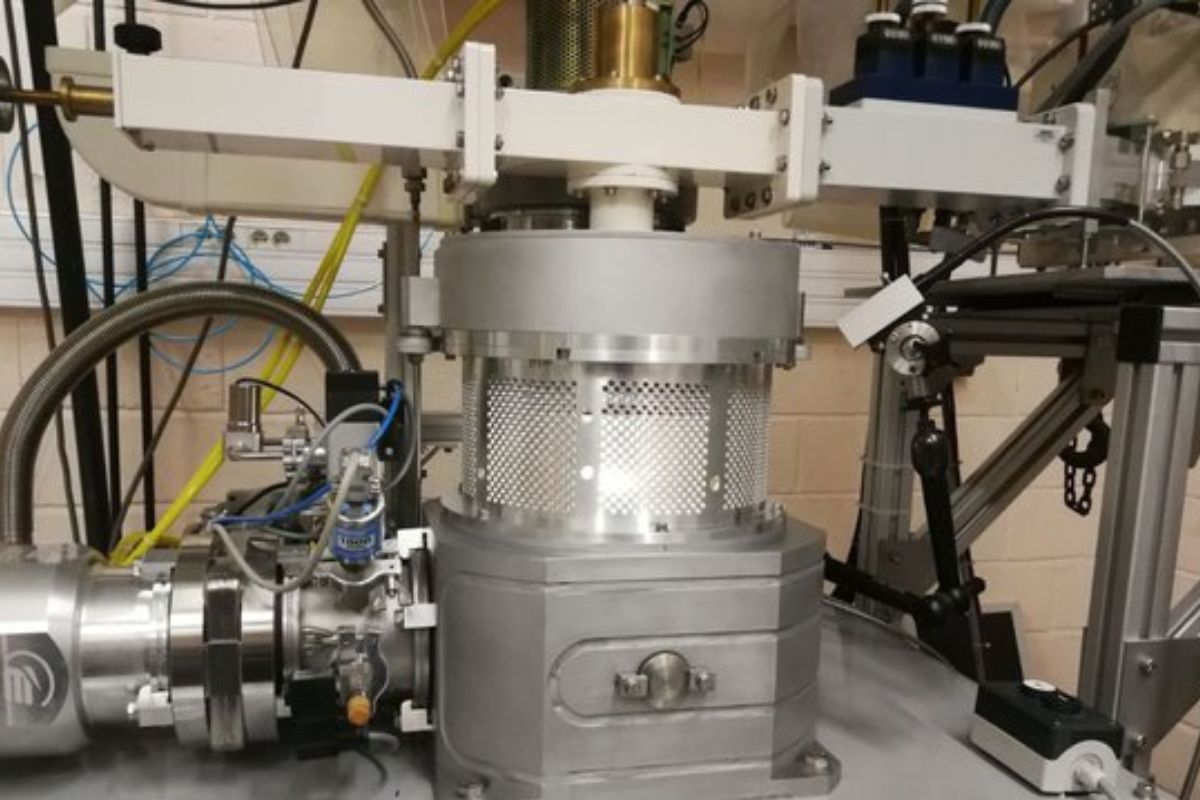
In the realm of lab-grown diamonds, cutting-edge methods and technologies are ushering in a new era of gems that rival their natural counterparts in beauty and structure. Your understanding of these gems' journey from labs to jewelry stores is deepened by grasping the innovations behind their creation.
Technological Developments in Synthesis
Lab-grown pink diamonds are primarily created using two methods: High Pressure-High Temperature (HPHT) and Chemical Vapor Deposition (CVD). The HPHT process mimics the natural conditions that form diamonds deep beneath the Earth's surface, using immense pressures and temperatures to transform carbon into crystalline diamonds. Alternatively, CVD involves a chemical process that deposits carbon atom-by-atom onto a substrate, allowing precise control over the diamond's growth environment.
In the pursuit of the highly coveted fancy vivid pink hue, these technologies have evolved significantly. For instance, specific adjustments in gas composition and temperature regulation during the CVD process have led to improvements in achieving the desired pink coloration, making the dream of owning a fancy vivid pink diamond more accessible.
Future of Lab Grown Pink Diamonds
The future shines bright for lab-grown pink diamonds, with ongoing innovation poised to enhance their quality and lower production costs. The development of hybrid technologies that combine the best aspects of HPHT and CVD is anticipated, aiming to streamline the creation of fancy vivid pink diamonds. Moreover, advancements in treatment processes post-synthesis, such as annealing, can further intensify the pink color, driving up the value and appeal of these gemstones.
With sustainability and ethical considerations increasingly influencing consumer choices, your curiosity about the origin of your jewelry can be satisfied by these innovations. Lab-grown pink diamonds are not just triumphs of technology but also symbols of a responsible choice for a brighter, greener future.
Frequently Asked Questions
Before you invest in a lavish lab-grown pink diamond, it's crucial to understand their value, pricing, and how they stand up to their natural counterparts. Here's what you should know.
How do lab-grown pink diamonds compare to natural pink diamonds in terms of value?
Lab-created pink diamonds offer a cost-effective alternative to natural ones, often presenting similar optical and chemical characteristics but at a lower price point. Their value is influenced by the fact that they are more accessible and ethical, yet they carry a different resale and historical value compared to mined pink diamonds.
What should I consider when purchasing a lab-grown pink diamond ring?
When you're in the market for a lab-grown pink diamond ring, focus on the stone's quality, certification, and the reputation of the seller. It's also important to ensure that the design and metal setting complement the unique hue of the pink diamond.
How is the price of lab-grown pink diamonds determined?
The price of lab-grown pink diamonds is generally determined by the same factors that influence natural diamonds—cut, color, clarity, and carat. However, since the production cost is typically lower, these diamonds are more affordable while still providing exceptional quality.
Where can I find lab-grown pink diamonds for sale?
Lab-grown pink diamonds can be purchased from specialized jewelers and online retailers who focus on synthetic stones. Look for providers that offer detailed information about the origin and crafting of their diamonds to ensure authenticity.
What are the options for lab-grown pink diamond earrings?
Options for lab-grown pink diamond earrings are vast, ranging from simple studs to intricate halo designs. When selecting, consider the setting and the type of back used to ensure they secure the earring properly and complement the stone's beauty.
What makes a lab-grown pink diamond necklace a desirable choice?
A lab-grown pink diamond necklace is a desirable choice for its eco-conscious origin and its versatility in design. Regardless of whether you prefer a subtle solitaire or a more elaborate pendant, these necklaces offer luxury and style at a more approachable price point.
Checkout some of our top collections:
Leave a comment
Please note, comments must be approved before they are published.
